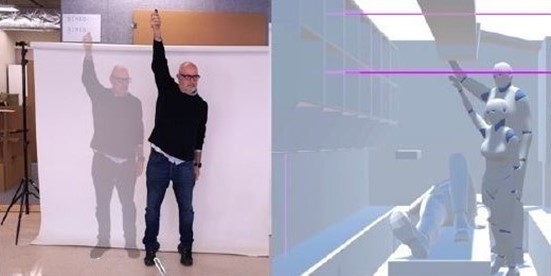We are seamlessly incorporating applied anthropology and ergonomics to improve the design process.
 Ensuring the comfort and functionality of confined human environments and workstations requires the diverse range of body shapes and sizes within the user population are accommodated. Anthropometry, the study of human body measurements, serves as a crucial tool for comprehending these variations. However, the current array of computer modeling tools utilised to integrate anthropometric data into design processes faces numerous challenges, impeding their seamless application in the design process.
Ensuring the comfort and functionality of confined human environments and workstations requires the diverse range of body shapes and sizes within the user population are accommodated. Anthropometry, the study of human body measurements, serves as a crucial tool for comprehending these variations. However, the current array of computer modeling tools utilised to integrate anthropometric data into design processes faces numerous challenges, impeding their seamless application in the design process.
SEAMLESS ANTHROPOMETRIC DESIGN
Part of the Australian Research Centre for Interactive and Virtual Environments (IVE) at the University of South Australia, the Studio for Complex Human Environment Design (SCHED) partnered with Ekium and the University of Adelaide to develop a system that incorporated anthropometry seamlessly into the design process, funded by a Defence Innovation Partnership Grant.
The team's interdisciplinary expertise in VR software, biomechanics, anthropometry, industrial design, and architecture, coupled with their extensive experience in applying anthropometry to the design of Isolated and Confined Environments (ICEs), led to the development of two innovative tools: the Poser and the VR tool. Collectively, these tools are referred to as the Real Anthropometry Experience System (RAES), representing a significant advancement in anthropometric design technology
IMMERSIVE DIGITAL HUMAN MODEL DESIGN
The RAES Poser Capture Tool allows designers to interact with a Digital Human Model (DHM) in real-time within a virtual environment. Utilising motion capture technology, designers can observe their own movements on a screen, synchronised with the actions of the DHM, allowing for a dynamic exploration of various postures required by different body sizes to achieve the same goal. These poses can be effortlessly captured and exported to CAD software, streamlining the virtual prototyping process and enhancing the realism of DHM simulations.
The VR tool immerses designers into a virtual environment inhabited by a DHM. As designers navigate through the space, the DHM mirrors their movements in real-time. Designers can experiment with different body sizes, facilitating evaluation of reach and sightlines across a diverse range of statures and body segment proportions. This hands-on approach provides designers with a tangible understanding of physical sensations and experiences that are otherwise unattainable. By employing real human movement rather than digital simulations, the VR tool eliminates the limitations associated with artificial motion representation, enhancing the fidelity of the design process.
IMPACT
The seamless integration of applied anthropology and ergonomics into the design process, facilitated by the Real Anthropometry Experience System (RAES), revolutionises the approach to accommodating diverse body shapes and sizes.
This innovation is a significant advancement in anthropometric design technology. By incorporating real human movement, rather than relying solely on digital simulations, and simplifying posing procedures encourages early integration of DHMs in the design phase, ultimately producing a design that is more useable and comfortable for people.
The system has generated significant interest since it was showcased at several conferences, and we are actively collaborating with multiple partners to advance its development for future commercial deployment.
.
"Working with Peter and team on the RAES project showcased effective collaboration between academia and industry to tackle Defence challenges. The RAES tool promises to revolutionise anthropometry and space design. The Defence Innovation Partnership looks forward to the future development of the RAES tool for Defence and dual-use applications."
Bez Mohammadi
Pathways Manager
Defence Innovation Partnerships

For more information or to discuss potential projects contact: Peter.Schumacher@unisa.edu.au



